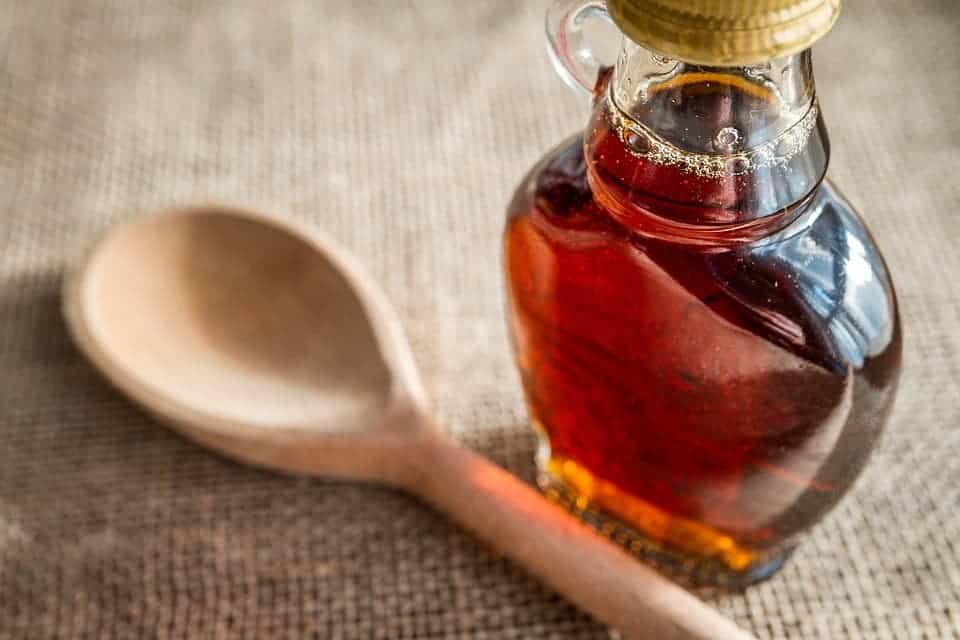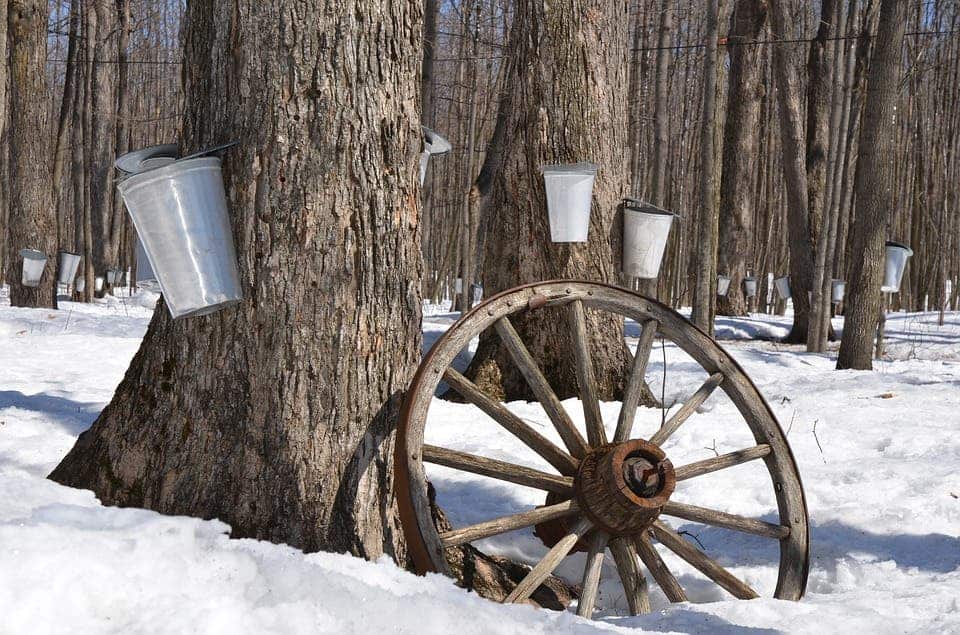Maple syrup has been around for centuries, and there is a great deal of nostalgia attached to the fact that it’s still being made today as it has been for generations. Climate change, however, might abruptly put an end to this enchanting sweetness. According to new research, if current emission trends continue unabated, by the end of the century the warm climate will kill the trees that make maple syrup.
Maple syrup — the real deal — is not at all easy to make. Genuine maple syrup is a treasure that can only be produced in the northern part of North America and only in certain weather conditions.
Generally, maple syrup producers make the syrup from the sap of only three maple species: the sugar maple (Acer saccharum), the black maple (Acer nigrum), and the red maple (Acer rubrum), because of the high sugar content (roughly two to five percent) in the sap of these species.
The sap of a maple tree looks like water. Its taste is also watery too, with just a hint of mapley favor. Though maple trees produce sap during most of the year, the kind of sap suitable for making golden syrup only flows in the late winter and early spring. This is around the time of what Native Americans used to call the “sugar moon”. Once the trees start to bud and produce leaves, the sap quality drops dramatically and cannot be used anymore to produce syrup.
Temperature is critical for maple tree sap to form, which needs nights in the 20ºF (2.2ºC) range and days warming to about 40ºF (4.4ºC).
To make maple syrup, farmers first collect the sap using special equipment like plastic tubing that carries sap directly from the trees to sap storage tanks. The sap is then boiled down in a special evaporator, all while its viscosity and sugar density is carefully monitored. The resulting syrup is then filtered, graded, and hot-packed.
It takes about five-and-a-half days for the average maple tree to produce 40 gallons of sap — just enough to produce only one gallon of syrup.
So, you see, it takes a great deal of work and very specific weather circumstances to make real golden maple syrup. This makes maple trees particularly vulnerable to climate change, as researchers at the University of Michigan showed.
The team analyzed the last two decades of tree and soil data from four maple farms in Michigan. Based on this data, the researchers ran a climate model under two scenarios: an optimistic pathway where CO2 emissions drop fast and the globe warms by less than 1°C by the end of the century; and a business-as-usual scenario where today’s emission trends continue undisturbed leading to a global average temperature rise of 5°C and 40 percent less rainfall during summer.
Before embarking on their study, the researchers had the hypothesis that the fertilizing effect triggered by nitrogen from pollution (cars, industry, etc.) might compensate for the warming climate. This analysis, however, shows that both scenarios will hurt maple sap production. The second scenario actually means that sugar maples will eventually disappear because of the dry and warm climate, despite the extra nitrogen, as reported in the journal Ecology.
After chocolate, now this? I don’t know about you, but if more freak weather, droughts or the prospect of global famine doesn’t sway you to do something about climate, maybe the fact that maple syrup might disappear or become prohibitively expensive might. If not, you can always buy “pancake” syrup made from high fructose corn syrup, cellulose gum, and caramel coloring. Enjoy your Sunday mornings!











